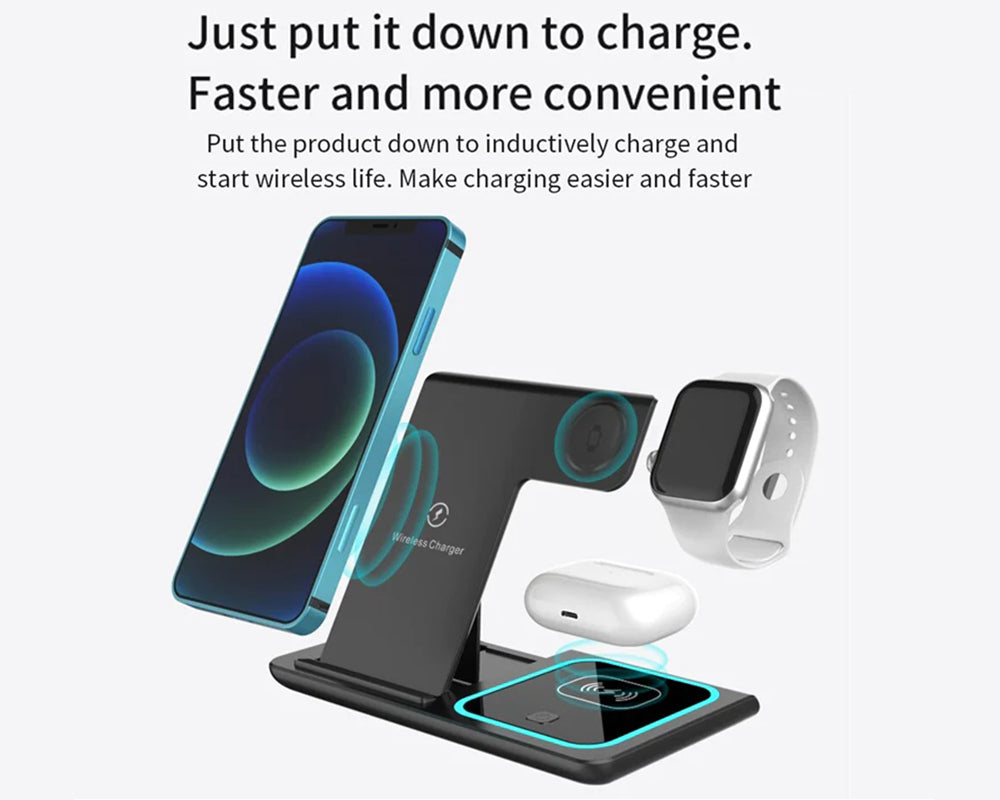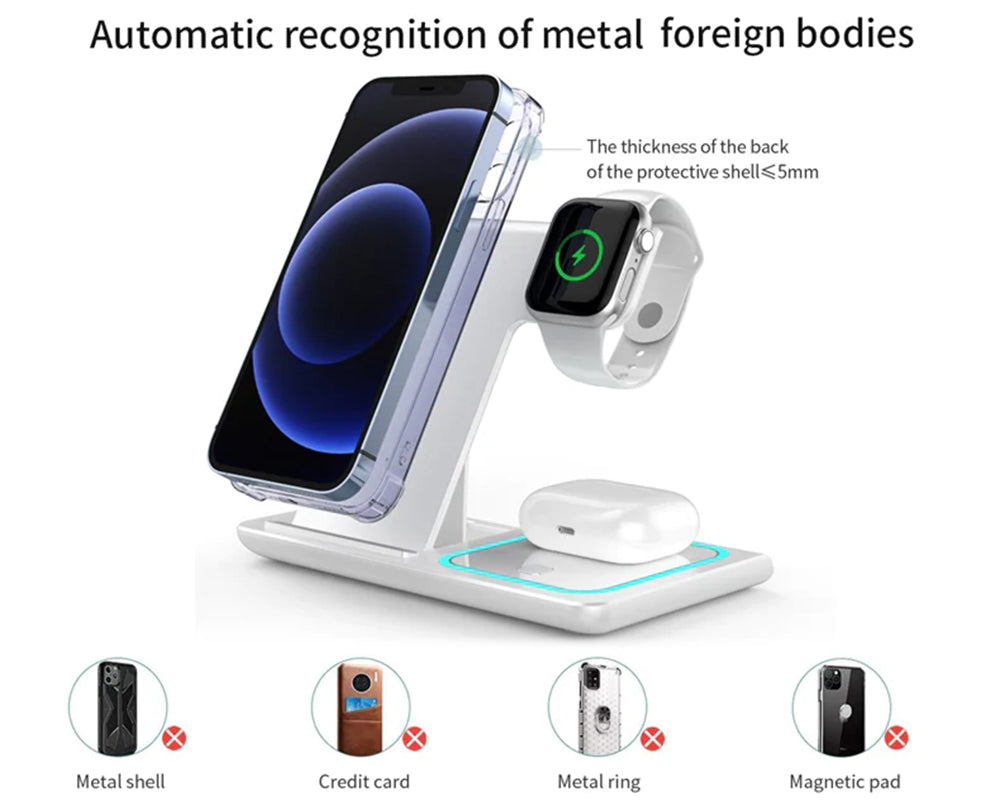As wireless charging takes society by storm, the 3 in 1 wireless charger is beginning to flourish. Perfect for any workspace, this versatile device not only offers fast charging convenience, but also helps reduce cable clutter. But surprisingly, despite the fact that wireless charging platforms have been on the market for a long time, it is still surrounded by misconceptions. This has deterred some people from trying wireless charging technology. The truth is, if you still believe these rumors, then you could be missing out on a lot. That's why we're writing this article to dispel the most common misconceptions.
Myth 1: Wireless charging is slow
Wireless charging takes longer to charge a phone than wired charging. This is a simple misconception because the charging speed depends on the power source that charges your phone. Using a high amp wall socket allows faster charging as the power is directed into your phone straight away. Most people think that Qi wireless charging only provides 5W of charging output. But the truth is that the latest developments have achieved a high power output of 15W, which is more than enough for most phones. Plus, Qi wireless chargers are now available in a variety of styles and designs, so you can find one that fits your lifestyle.

Myth 2: Wireless charging is unsafe
The specifications of wireless chargers are very strict and their design and thermal regulation are carefully tested to ensure that they do not cause any damage to the device and pose any danger to the user. Qi-certified chargers dynamically adjust the charging output to prevent harmful heat generation. They also come with safety features that ensure that the chargers only emit charging current if the device being charged is compatible. It is also worth noting that the electromagnetic radiation emitted through the Qi wireless charging system is minimal and does not pose any risk to humans.
Myth 3: Wireless charging is inefficient
The use of wireless charging involves the conversion of electric current to an electromagnetic field and back again. This does mean there is some power loss. That said, 80% of the input wattage is still transmitted when you charge wirelessly. The efficiency of a wireless phone charger depends on its coil design and components. Therefore, you should only use high-quality and Qi-certified wireless charging platforms that are sure to be more efficient than cheap ones made from inferior materials.
Myth 4: Wireless charging will reduce the battery life of your phone
Another misconception is that wireless charging can adversely affect the battery life of your phone, but this is not entirely true. All forms of charging can affect a phone's battery. Typically, a battery's original capacity can be reduced by 20% after 500 charging cycles. Also, how much battery capacity is used between charges has a greater impact on battery life than the charging method you use. Keeping the battery at 50% or higher can slow degradation and is healthier for the battery than letting it drop to 5% before charging. When you have a wireless charger, it's actually easier to leave your phone on the charging pad a few times a day to make sure the charge is above the critical 50% level, rather than using the battery all day and then plugging it in at home.
Myth 5: Wireless charging will make the phone battery overheat
Smartphones and Qi-certified wireless charging platforms are both required to regulate charging output. This is to ensure that there will be no excessive heat buildup while charging. That’s why it is important to use only Qi-certified wireless chargers because that’s your assurance that your smartphone won’t be at any risk of overheating.
Precautions for using wireless chargers:
When using a wireless phone charger, take note of the following precautions to properly charge the battery and avoid potential issues or damage to your phone.
Make sure your phone is in the center of the charger: Place your phone on the wireless charging station so that the charging coils are aligned. If the coils are not aligned, the charging speed may be reduced or charging may not occur at all.
Remove the thick phone case: In general, most wireless charging transmission distances are usually between 5mm and 8mm. Therefore, the first thing to pay attention to when wearing a mobile phone case is thickness. Especially for those with 3D three-dimensional decoration on the mobile phone case, it will definitely affect the charging efficiency.

Remove metal objects: Before placing your phone on the wireless charger, remove any metal objects, such as cases, credit cards, or keys, as they can interfere with the charging process.
Keep away from high temperature and water source areas: If your phone gets too hot, it may stop charging. So avoid high temperature environment when using wireless charging. Also, as with all electrical devices that connect to a power outlet, liquid can be very dangerous. Don’t get your charger wet, and make sure your phone is dry before you set it down to charge.
Keep the charger clean: Regularly clean the charging pad and your phone to prevent dust and debris from interfering with the charging process.

This article explores some of the common misconceptions about wireless charging, in the hope that you will gain a better understanding of wireless charging. If you are looking for a high quality Qi certified wireless charger, armadadeals has a range of products for you to choose from.



